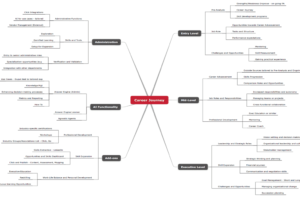
How Digital Assessment Platforms Can Help Publishers Lead the Shift from Teaching to Learning
According to UNESCO, quality learning transforms a “curriculum into meaningful educational outcomes.” The UN agency emphasizes the importance of learner-centred pedagogical approaches to achieve better academic outcomes. While education delivery moves away from teacher-led instruction to student-centered learning, publishers remain at the heart of the transition. With digital assessment platforms as the catalyst, K-12 publishers can effectively leverage technology to deliver personalized, student-centric learning experiences.
From Static Content to Dynamic Learning Journeys
Learning has progressed way beyond digitalized print materials and static PDFs. Interactivity, inclusion, and personalization characterize truly student-centric experiences. Digital assessment tools empower K-12 curriculum publishers to embed personalized assessments within the learning content to deliver well-rounded student-centric learning experiences. These tools enable educational publishers to quantitatively and qualitatively measure student progress, content efficacy, and learning experiences. These easy-to-integrate online assessment platforms enable K-12 education publishers to make informed instructional decisions.
Tenets of Student-Centered Learning
- Active learning rather than just listening.
- A focus on achieving a deep understanding of the topic.
- Students take on more responsibility for their own learning.
- Learners have a greater sense of autonomy and control.
- A collaborative partnership exists between the teacher and student.
For quality education, both the teacher and the student reflect on and adapt their approaches to learning. K-12 assessment solutions, such as MagicBox’s Digital Assessment Platform, enable learning designers to effortlessly create, manage, and grade assessments. Such digital tools allow educators to transition from teaching what they know to helping each student learn what they need to. Teachers can create and assign standards-based, gamified, and personalized assessments. They can access detailed reports on student learning behaviors, maintained by the digital assessment platform. AI-powered online assessment tools facilitate instant feedback, making assessments more interactive and effective.
Real-Time Data: A Game Changer for Content Creation
Consider a 5th grader who, for some reason, is unable to do 4th grade math. While a traditional setting would force them to try harder, an online assessment platform, equipped with learning analytics, would identify areas of improvement through the student’s responses. It would adjust question types and suggest reinforcement learning resources to bring the learner up to speed. No embarrassment in front of a class full of students, no fear of being judged, just plain student-focused learning. All in real time.
K-12 curriculum publishers can elevate their learning products by integrating digital assessment tools with content authoring platforms. A digital assessment platform within the learning ecosystem enables dynamic adjustment of students’ journeys, leveraging modular, high-impact learning materials. This further helps personalize the learning journey to each student’s needs.
Enabling Formative Over Summative Assessment Models
Internationally renowned keynote speaker, Flower Darby, and James M. Lang, a Professor of Practice at the University of Notre Dame, emphasize the importance of frequent, low-stakes assessments in their book, Small Teaching Online: Applying Learning Science in Online Classes. The book elaborates on how small, flexible, and targeted assessments pave the way for timely interventions that have a big, positive impact on students.
“When learners believe their intelligence is flexible and capable of improvement, they are more likely to be successful at learning tasks.” ~ Small Teaching Online
Digital platforms that enable teachers to leverage formative assessment models empower them and districts to focus on growth, not just grading. This positions K-12 publishers as pilots of the transformation from teacher-driven learning to student-focused education. Discover how formative assessments unlock better K-12 outcomes.
Bridging the Equity Gap
Formative low-stakes assessments help overcome disparities in access, engagement, and understanding. Enriching the content with digital assessments positions educational publishers to deliver responsive content, driving inclusion.
Position Yourself as an Architect of Student-Centric Learning
The key is to integrate your digital course authoring platform with digital assessment creation tools that enable dynamic, personalized, and responsive learning delivery.
What Publishers Should Look for in a Digital Assessment Platform
- Interoperability
- Standards alignment
- Real-time analytics
- Content tagging
- Accessibility
- Multi-format assessments
Check out MagicBox’s Advanced Assessment Player and experience the “magic” of student-centric digital assessments.
The burgeoning personalized assessment market is poised to reach a market value of $26.56 billion by 2032. K–12 publishers will play a vital role in shaping the future of education. Real-time analytics-driven digital assessment platforms are more than a tech upgrade. They are a shift in mindset. They force curriculum developers to think student-first, push educators to teach what students need, and enable districts to make informed educational decisions.
Advanced assessment tools, such as MagicBox’s AI-powered assessment solution, arm you to capture a larger share of the market. Incorporating digital assessments within learner journeys through content augmentation positions your K-12 publishing house to better cater to the emerging needs of school education worldwide.
Ready to transform your publishing platform’s learning experiences with student-centric assessments? Speak to the MagicBox team to get started.
Source link




